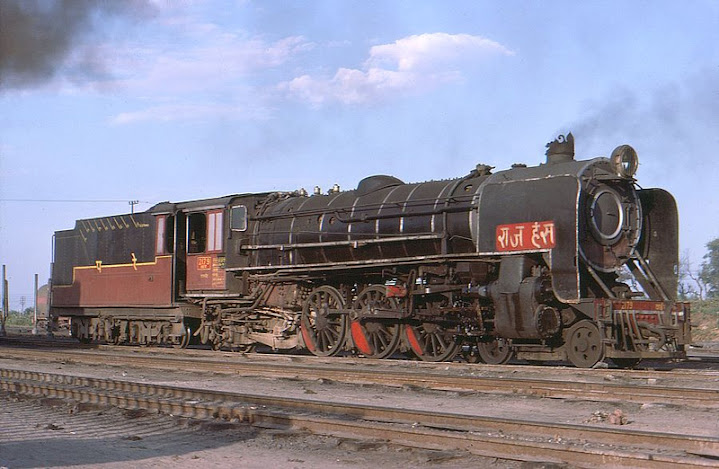DOUBLE ENGINE
LT COL NOEL ELLIS
12/XI/2022
These days, there is a ‘Jumla’ called ‘Double Engine’ in vogue. All those who are politically inclined understand it better. I shall not discuss politics at all.
As a child one spent many a summer vacation with my Mom’s Sis and family at Kathgodam. Mausa was in the Indian Railways. He was handling the Loco-Shed there. I have fond memories of the Steam Engines he and his team maintained on the ‘meter gauge’ section.
The concept of ‘double engine’ is not new. At a station called Lalkuan, Dad would walk me to the guard’s cabin to show me ‘coupling’ of a steam locomotive to the train’s rear end. We were used to an engine which pulls from the front but this engine used to push the train from behind.
From Haldwani, it was a steep climb to Kathgodam. A ‘YP’ class steam engine would be infront. A YB class of engine called the “Banker” in the loco parlance would push from behind. Bankers were a necessity, otherwise the train would not climb.
Uncle’s house was just above one end of the Railway station from where trains used to start. A set of ‘bankers’ would leave for Lalkuan early in the morning. A ‘buddy pair’ of engines would break the silence at 2.30 am, when they would whistle off to proceed full steam to bring the most prestigious train of the Kumaon hills to the final terminus.
Once, this train got stuck about a kilometre short of Kathgodam station, where the climb was the steepest. That stretch being a single line, no other engine could go behind the train. Spare banker had already been called for. All engines pushed and pulled as hard as they could but the train wouldn't budge. The tracks had gone slippery with dew freezing on the tracks.
Then the most professional hand of this side of ‘Gawala River’ took over the situation. Uncle had a WD class and a P class steam engine which were used for local shunting. They were mustered from the Kathgodam side. Uncle got on to the WD in the lead. That was the first time I saw the use of flag signals to synchronise the move of so many engines in unison. Complete Loco staff of Kathgodam was summoned. All Emergency services were deployed, just in case of a derailment.
A steam operated crane which used to load coal in the engines at the loco-shed was also brought in. Uncle puffed on his Panama cigarettes like a locomotive. He now took over complete command and control from the leading engine. Most passengers had got down to watch the tamasha.
There were three engines infront, a WD, P and YP and two YBs in the rear. A coordinated shove like in the tug of war was needed. The ‘Khacch’ sound, when the steam is released to the piston, had to be done concurrently.
Firemen huffed and puffed to shovel as much coal as they could for max steam for the precise move. It was coordinated with a ‘drop’ of a flag by a linesman, like the start of a race. The wheels slipped. Normal Chuk-chuk, went chukchukchukchuk-chuk-chuk. Thick black plumes of smoke rose from all chimneys eclipsing the rising sun. Finally, the train inched to the platform.
Prestige of the Loco Foreman was at stake. Our whole family were perched at a vantage point to see this complete action live. It took about two hours for this episode to get over. People who had got down had to now walk the distance to retrieve their luggage. The bankers detached to fetch the next train after a water refill.
Four different kinds of engines were used to pull and push a train. It needed precise timing and a lot of crew coordination, lots of training and on the job experience.
These days we have trains running with six engines, which can haul unthinkable loads and run at unthinkable speeds. If one engine driver relaxes, imagine what chaos he can create.
Double engine is any day better when the task is uphill. But the class of engines and their placing must be precise. If someone from outside has to rescue a train with another engine, it may work but should be an exception rather than a rule.
All available engines at hand were used by Uncle and his team. It did not matter if it was a shunter, a banker or a puller. He brought the passengers safely to their destination that day. Massey Uncle truly was our hero.
Those days of steam engines are still fresh in my mind. (Pics are courtesy the internet). Can we walk back in time? I wonder!!!!!!!!
JAI HIND
© NOEL ELLIS
Article is dedicated to my Uncle Mr E Massey, Loco-Forman, NE Railway, Kathgodam. Rest in peace Sir.




Comments
Post a Comment